How to Spot Fake Nike Dunk Sneakers
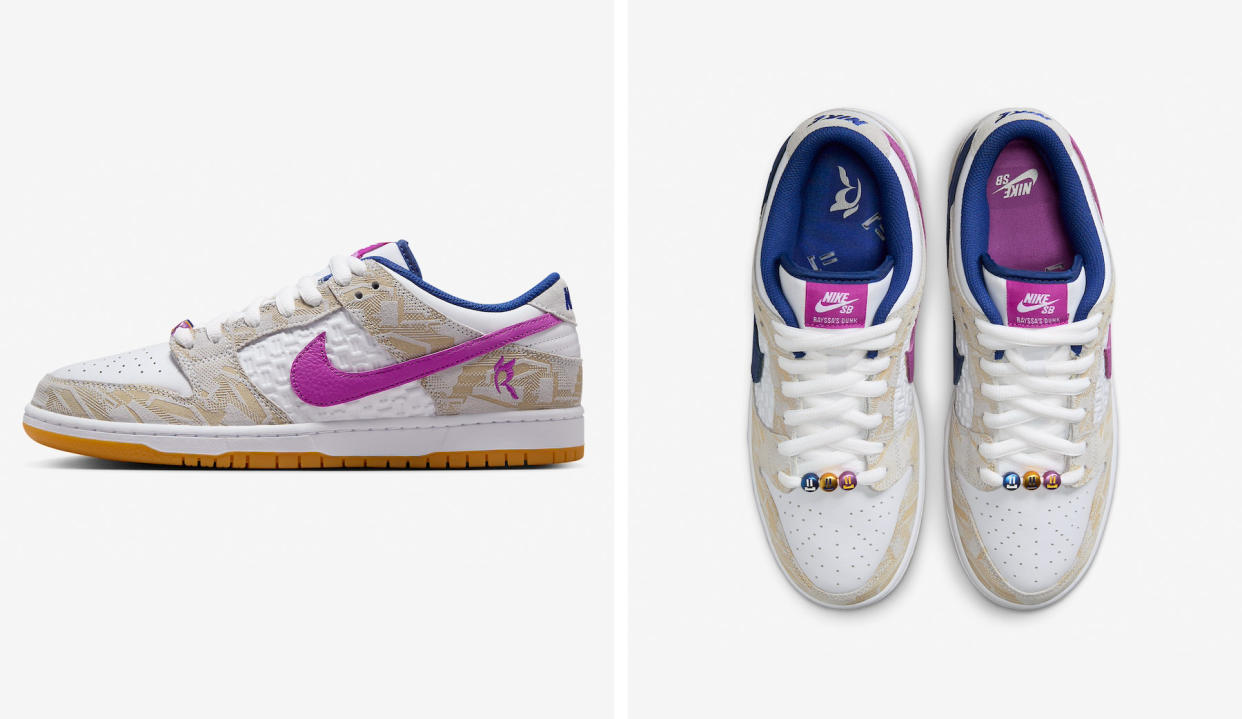
More from Footwear News
Originally released in 1985, the Nike Dunk has emerged as one of the most popular and best-selling sneakers in recent years. Due to that popularity, manufacturers of fake sneakers are attempting to cash in by selling nearly accurate replicas of the model. Because the Dunk is an easy sneaker to make, many fake pairs are flooding the market.
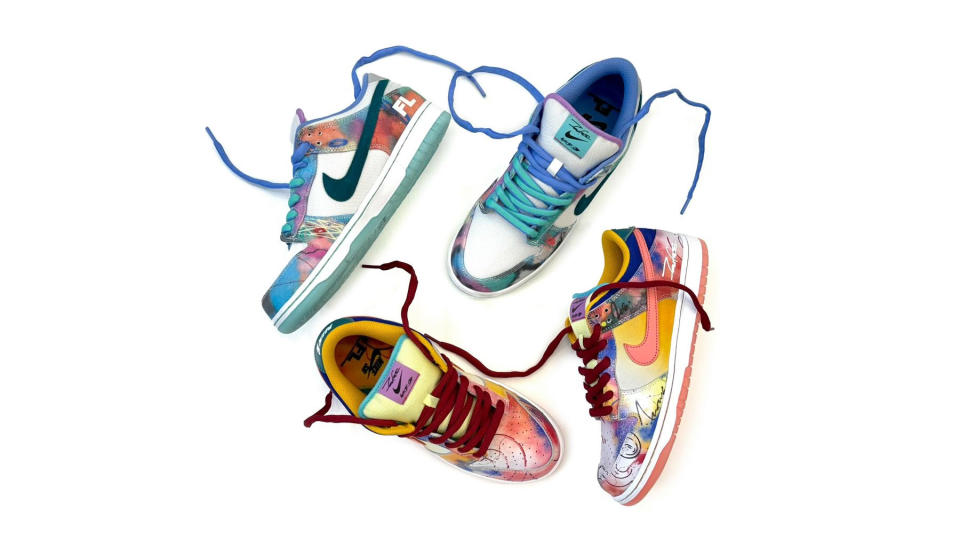
Fortunately, there are several ways to check your Dunks to verify their authenticity. Below is a step-by-step guide to follow before purchasing your next pair.
Side-by-Side Check
The most effective method for determining the reality of a pair of Nike Dunks is by examining their overall shape. Despite fake manufacturers’ efforts to replicate real pairs more closely by adjusting their specifications, they consistently struggle to match the correct shape. Fake Dunks typically appear bulkier, whereas real ones boast a sleeker and more streamlined profile. Even without tissue paper stuffing, fake Dunks may give the impression of being chunkier shoes.
Check the Leather
Surprisingly, there isn’t a significant gap in material quality between real and fake Dunks. However, a notable distinction lies in the stiffness of the leather used in fake versions. While the stiffer leather may seem desirable, it lacks the flexibility needed to conform comfortably to the wearer’s foot.
Additionally, fake Dunks often exhibit a glossy appearance and a more pronounced texture compared to real pairs.
The edge of the leather on real pairs tends to stick straight up, while fake leather is often rolled at the edge.
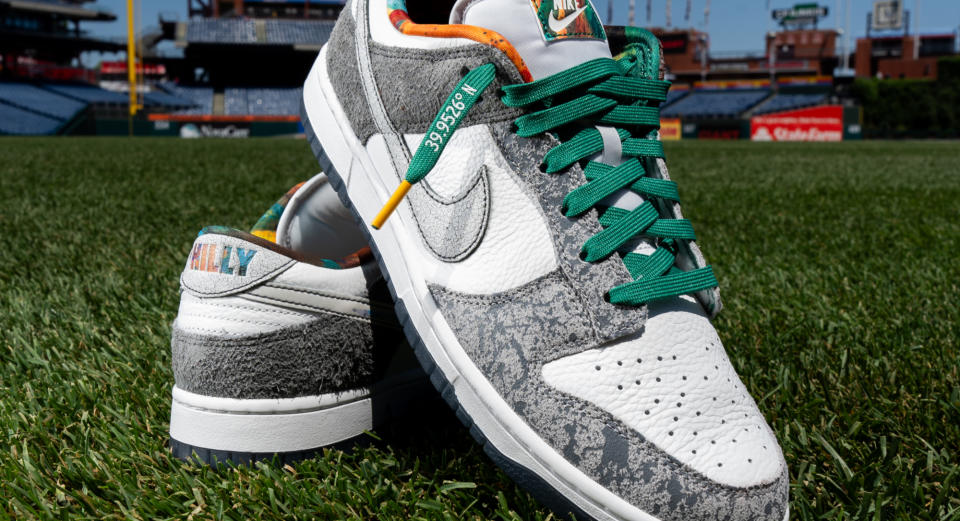
Heel Check
Because fake Nike Dunks are typically bulkier in appearance, the heel is often wider than the narrow heel of real pairs.
On real Nike Dunks, the ‘Nike’ embroidery features a clear and well-defined font, with consistent spacing between letters. In contrast, fake Dunks often exhibit uneven spacing between letters, and at times, the letters may appear too close to each other, giving a crowded or cramped appearance.
The white leather panel on the heel of real Nike Dunks is shorter and more compact compared to fake versions. Additionally, the three stitch lines running along the heel of real Dunks are vertically positioned relatively close to both the leather back tab and the foxing. Moreover, the ends of the Swoosh, which wrap around the heel, should align neatly with these stitch lines on real pairs.
Midsole Check
Real Dunk midsoles are slightly shorter vertically compared to fake pairs.
The midsoles of real pairs have a more distinct texture and the indentation towards the middle is more pronounced.
Check the Outsole
On the outsoles of real Dunks, the rubber is less texturized than it is on fake pairs. Additionally, real outsoles tend to have a less glossy appearance.

Tongue Check
The Nike logo is typically centered on the tongue tag, leaving equal empty space on each side.
‘NIKE’ lettering is bold, with the bottom of the ‘E’ touching the Swoosh.
The placement of the registered trademark symbols (®) may differ across pairs. For instance, on the “Panda” colorway, one ® is centered beneath the ‘N’ in NIKE, with a second ® middle-aligned with the ‘E.’ Conversely, on the “Kentucky” colorway, the ® is shifted right toward the second half of the ‘N,’ and the upper ® may appear above the logo.
It should be noted that the lower ® may be absent on the tongue of some pairs produced in 2024.
Lateral Swoosh Check
Because the Swoosh is properly aligned with the back stitch, there’s more space between the end of the Swoosh and the collar. On fake pairs, the Swoosh isn’t properly aligned with the back stitch, and less space between the end of the Swoosh and the collar.
The bottom of the real Swoosh will appear to be fuller and thicker than it does on fake Dunks.

Medial Swoosh Check
Real Nike Dunks feature a medial Swoosh that is symmetrically rounded and tapers into a fine point at the tip. Fake pairs often have a less rounded medial Swoosh with a duller tip.
The positioning of the medial Swoosh on real Dunks is typically somewhat centered along the quarter, creating even space above and below it. Fake pairs may have the medial Swoosh positioned too high or too low, resulting in a large gap of space.
Toebox Check
When viewed from the side, a real Nike Dunk toebox typically exhibits an upward curve, causing the front of the shoe to be slightly elevated from the surface. A fake Dunk toebox often lies flatter on the surface.
Perforations along real toeboxes are usually deeper and more functional, providing ventilation to the foot. fake perforations, on the other hand, may be more superficial and purely cosmetic. Additionally, there should not be significant space between the perforations and the edge of the toebox on real Dunks.
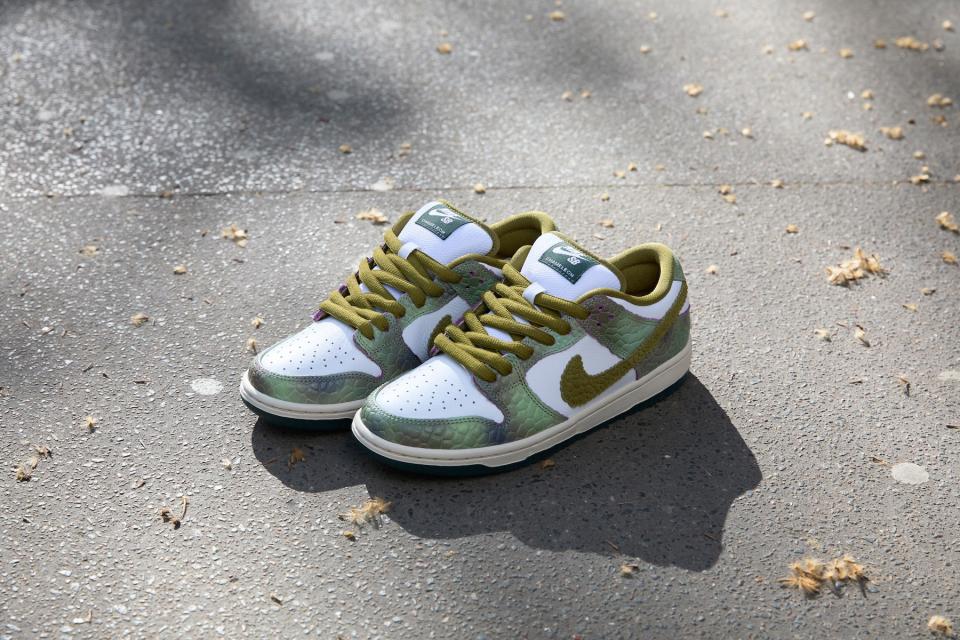
Box Check
The box for a real pair of Nike Dunks features a vibrant red exterior, while the box for fakes is more muted in appearance.
Real boxes will come with a green quality control sticker and a quality control (QC) stamp, which may be missing in boxes for fakes. The date listed in the QC stamp should be within a month of the second date listed on the shoe’s size tag.
The font size on real Dunk boxes may be larger, and the corners of the labels should be pointed. Conversely, boxes for fake Dunks often feature a more boxy and spaced-out font, along with labels having rounded corners.
Additional Tips to Ensure That You’re Not Scammed When Buying Nike Dunks Online
Buy Nike Dunks from reputable retailers as often as possible.
If the price seems too good to be true, you’re likely dealing with fake Nike Dunks.
Exercise caution with alternative terms used for fake sneakers, such as Factory Variant, Replica, Reps, UA (Unauthorized Authentic), and Unauthorized. Regardless of the labels these sellers use, they all refer to counterfeit products.
Verify the legitimacy of the seller by checking their rating or searching for them online. Often, entering a seller’s name in a search engine will yield feedback, good or bad, from individuals who have previously purchased products from them.
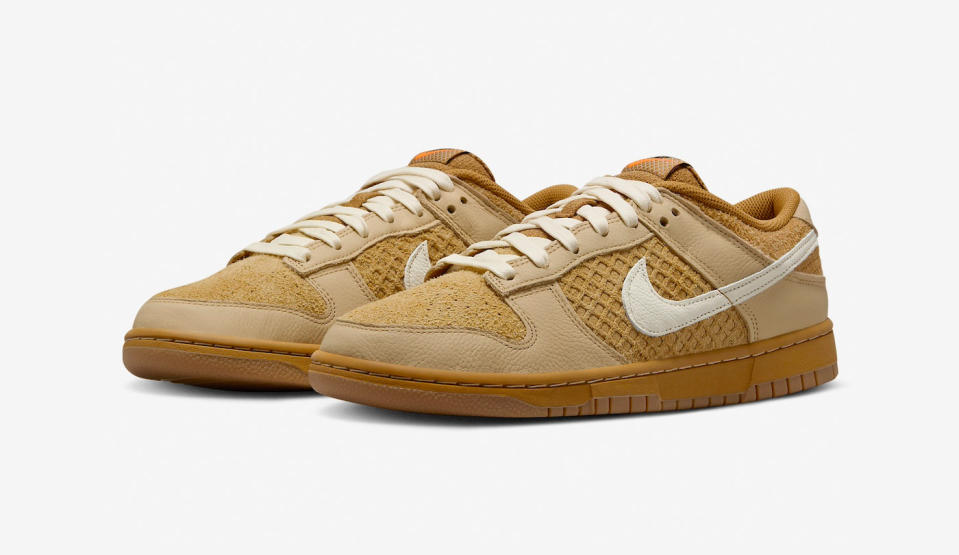
Reach out to the seller and request additional photos of the Nike Dunks. A reputable seller should have no issue with transparency and will readily comply with your request when approached respectfully. Having photos may also be helpful if you need to file a claim if the seller sends sneakers that are different from the supplied pictures.
Use secure payment methods such as PayPal or credit cards that offer buyer protection. Avoid wire transfers or payment methods that offer no recourse for fraud.
Trust your instincts. If something feels off or if the seller is pressuring you to make a quick decision, it’s best to walk away and find another seller.
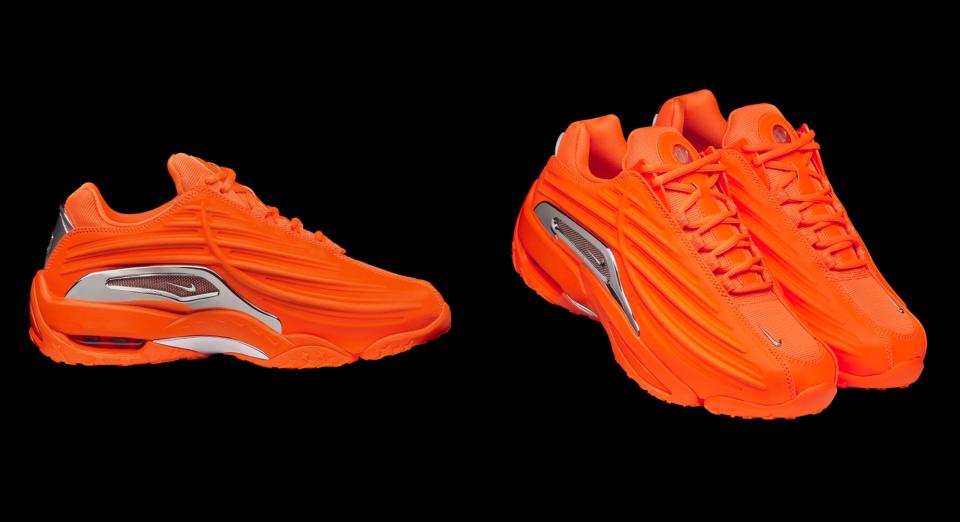
Nike and Drake Debut New Nocta Hot Step 2 Sneaker in Bright Orange Colorway, Photos
Launch Gallery: Nike Dunk 'Philly' First Look [PHOTOS]
Best of Footwear News
Adidas Gazelle: Complete History & Timeline of the Classic Sneaker
Air Jordan 4 History & Timeline: Everything You Need to Know
Sign up for FN's Newsletter. For the latest news, follow us on Facebook, Twitter, and Instagram.


